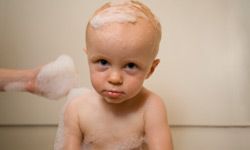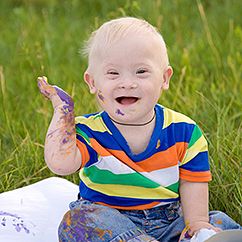To many people, there's nothing as precious, innocent or defenseless as a baby. That's why it may be more than a little alarming when babies develop discolored, scaly, crusty patches over their soft new skin. This condition is known to doctors as seborrheic dermatitis, and to the rest of us as cradle cap. Despite the name, it can involve not only the scalp, but also the face and other parts of the body. And it can affect toddlers as well as infants.
As unsightly as the condition may appear, rest assured that cradle cap is both completely harmless and temporary. It's basically the infant form of dandruff. Nevertheless, it may be hard to look at such a skin condition on your baby without wanting to do something about it.
Advertisement
If you'd like your baby's skin to be clear for the next set of family pictures, read on to learn how to combat cradle cap.





